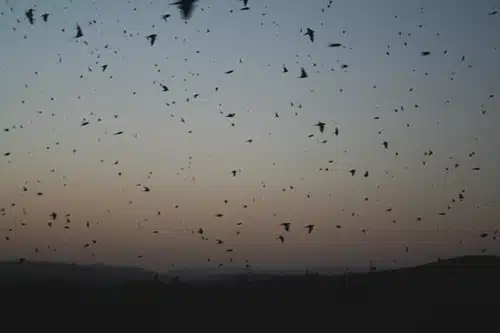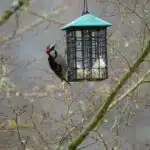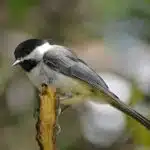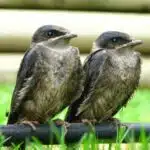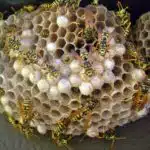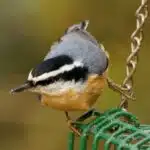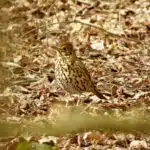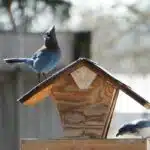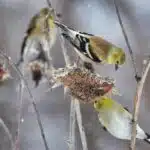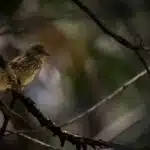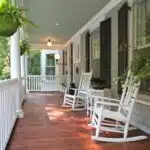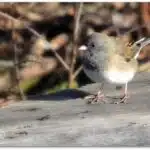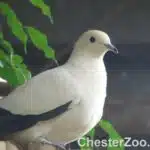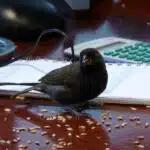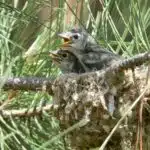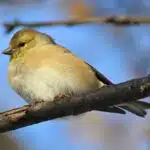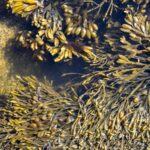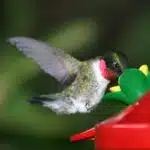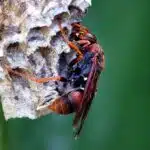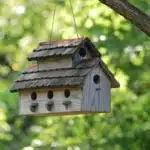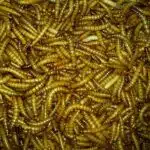Attracting swallows to your garden or backyard can be a rewarding experience for bird enthusiasts. These aerial acrobats are known for their impressive flying skills and their ability to consume large quantities of insects, making them valuable additions to any ecosystem. However, attracting swallows requires more than just putting up a birdhouse or feeder. To successfully attract these birds, it is important to understand their habits and preferences.
Swallows are migratory birds that belong to the family Hirundinidae. They are found in diverse habitats across the world, from cities to rural areas, and are well-known for their distinctive forked tail and graceful flight patterns. In order to attract swallows, it is essential to provide them with suitable nesting sites. This includes building artificial nests or providing access to natural cavities such as hollow trees or cliffs. Additionally, offering a source of freshwater and planting insect-attracting plants can also increase the likelihood of attracting swallows. By understanding the specific needs of these birds and taking appropriate measures, individuals can create an environment that is conducive to the thriving of this species while enjoying their beauty and benefits.
Understanding Swallows And Their Habits
Swallows are migratory birds that belong to the family Hirundinidae. The species is characterized by their streamlined body, forked tail, and long pointed wings. These birds have a global distribution and can be found in most parts of the world except for Antarctica. Swallows have a unique migration pattern where they travel thousands of miles to breed in the summer season and return to warmer regions during winter.
Swallows have a diverse diet that primarily consists of insects such as flies, mosquitoes, moths, and beetles. They hunt their prey while in flight and are known for their aerial acrobatics. Swallows are beneficial to humans because they help control insect populations by consuming large numbers of bugs each day. Their feeding habits also make them an important part of the food chain as they provide food for other predators like hawks and falcons.
Attracting swallows requires an understanding of their habitat requirements. These birds prefer open spaces near water bodies where they can build their nests on vertical surfaces such as cliffs or buildings. Providing nesting boxes is one way to attract swallows, but it’s important to place them in areas with ample flying space and away from human disturbance. By understanding the behavior and lifestyle of these amazing birds, we can create suitable environments that benefit both us and them.
The Benefits Of Attracting Swallows
Swallows are highly beneficial birds to have around due to their ability to control insect populations. Providing suitable nesting opportunities can encourage swallows to remain in an area and populate it. Nesting sites should be placed high up, near bodies of water, and be made of mud and straw to mimic their natural nesting environment. Swallows are effective at controlling harmful insects, as they are able to consume large amounts of them, making them a desirable species to attract.
Nesting Opportunities
DIY Nesting opportunities are crucial when trying to attract swallows. The availability of nesting sites is one of the key factors that determines whether swallows will stay in an area or not. Providing them with suitable nesting options can be a great way to entice these feathered friends to take up residence in your backyard.
When it comes to location selection, there are a few things to keep in mind. Swallows prefer nesting sites that are close to open areas such as fields or water sources, where they can easily catch insects for food. Additionally, they tend to choose spots that are sheltered from the elements and predators. DIY Nesting options, such as wooden boxes or gourds, can provide the perfect solution for attracting swallows while keeping them safe from harm.
Providing swallows with a variety of DIY nesting opportunities can increase the chances of success in attracting them. Different species have different preferences when it comes to nesting materials and placement, so it’s important to offer various options. By providing suitable locations for these birds to nest, you’ll not only be helping them thrive but also playing a crucial role in maintaining the ecological balance and biodiversity of your local environment.
Insect Control
Attracting swallows to your backyard offers more benefits than just enjoying their beauty and chirps. These birds are known for their impressive insect control abilities, making them a valuable addition to any ecosystem. As an ornithologist or avian naturalist, it’s important to understand the role that swallows play in maintaining the ecological balance and biodiversity of an area.
Swallows are natural predators of insects, including mosquitoes, flies, and beetles. A single swallow can consume up to 1,000 insects per day during peak breeding season. By attracting swallows to your backyard with suitable nesting options like DIY boxes or gourds, you’ll be providing a natural solution for controlling insect populations without resorting to harmful pesticides.
In addition to providing nesting opportunities for swallows, you can also install bird feeders in your backyard to attract other bird species that contribute to insect control. For example, chickadees and titmice are known for eating caterpillars and other pest insects that can damage crops and gardens. By creating a welcoming environment for these birds, you’ll not only be serving yourself but also contributing towards the greater good of your local ecosystem.
Identifying Swallow Species
Swallow identification is essential for bird enthusiasts, conservationists, and farmers. According to the Audubon Society, there are 83 species of swallows worldwide, with six species regularly found in North America. These include the Tree Swallow, Violet-green Swallow, Bank Swallow, Northern Rough-winged Swallow, Cliff Swallow and Barn Swallow. Identifying these species can be quite challenging as they have similar physical characteristics and behaviors.
One way to identify swallow species is by their migration patterns. Some swallows migrate long distances from South America to North America while others remain in one location all year round. Additionally, some species prefer aquatic habitats such as ponds or lakes while others prefer open grasslands or forests. Observing the habitat and behavior of a swallow can aid in identifying its species.
Another method of identification is through physical characteristics such as size, coloration, and markings on their feathers. For example, the Barn Swallow has a blue back with a rust-colored throat and forehead while the Tree Swallow has iridescent blue-green feathers on its back and head. The Cliff Swallow has a distinct white forehead patch that distinguishes it from other species. Understanding these differences can assist in accurately identifying each swallow species.
Identifying swallow species is crucial for understanding their ecology and behavior patterns. In the next section, we will discuss how creating suitable nesting sites can attract different species of swallows to your property.
Creating Suitable Nesting Sites
When building suitable nesting sites for swallows, it is important to choose the right location. Factors such as access to food, protection from predators and the presence of trees should be considered when selecting a location. To ensure the safety of the swallows, a secure nesting box should be built. The nesting box should be made of weather resistant material such as wood or metal and should be securely fastened to the chosen location.
Choose Correct Location
When it comes to choosing nesting and feeding locations for swallows, one of the most important factors to consider is the climate. Swallows are migratory birds that prefer warm weather, so it’s crucial to choose a location with mild temperatures. This will not only attract more swallows, but also provide them with a suitable environment for nesting and breeding.
Another important consideration when choosing a location for swallows is the availability of food sources. Swallows primarily feed on insects, so it’s essential to select an area where there is an abundant supply of insects. This can be achieved by planting insect-attracting plants or providing artificial insect habitats such as bug hotels.
Lastly, selecting a suitable location for swallow nesting requires careful consideration of factors such as wind patterns and proximity to water sources. Swallows prefer open areas with little obstruction from trees or buildings that may hinder their flight path or access to food. Additionally, they require access to water sources for bathing and drinking, so choosing a location near ponds or streams can greatly increase their chances of nesting success.
In conclusion, choosing the correct location plays a vital role in attracting swallows and creating suitable nesting sites. By considering factors such as climate, food availability, wind patterns and water sources, bird enthusiasts can successfully entice these beautiful feathered creatures into their backyard and provide them with a safe haven for breeding and raising their young.
Build Secure Nesting Box
Creating suitable nesting sites for swallows involves not only selecting the right location but also providing secure and comfortable nesting boxes. A well-designed nesting box can provide a safe and cozy environment for swallows to breed and raise their young, while also protecting them from predators and harsh weather conditions.
To build a secure nesting box for swallows, the following materials are needed: a wooden box with dimensions of approximately 8x8x12 inches, a front panel that has a 2-inch entrance hole, a back panel with ventilation holes, and a sloping roof to prevent water from entering the box. The interior of the box should be lined with straw or other natural materials to provide insulation and comfort for the birds.
DIY instructions for building a swallow nesting box are readily available online or at local birding stores. When installing the boxes, it’s essential to place them in areas that are accessible but also protected from predators such as cats or raccoons. Additionally, it’s important to avoid placing multiple boxes too close together, as this may result in overcrowding and territorial disputes among the birds.
By providing secure and comfortable nesting boxes, bird enthusiasts can create ideal habitats for swallows in their backyard. This not only benefits the birds but also provides an opportunity for individuals to connect with nature and contribute to conservation efforts through responsible stewardship of our natural resources.
Building Artificial Nests
DIY Nests are a great way to attract swallows. Building an artificial nest is easy, and it can be done with materials that are readily available. Swallows are known to prefer nesting in areas that are close to water, so building a nest near a pond or stream could increase your chances of attracting them.
Swallow Behavior is also important to consider when building an artificial nest. Swallows like to build their nests in protected areas where they can be safe from predators. The ideal location for a swallow’s nest is under the eaves of a building or in a sheltered area under a bridge. When building your DIY Nest, make sure it is placed at an appropriate height and angle, so that it mimics the natural environment of the swallow.
To further increase your chances of attracting swallows, you can provide additional nesting opportunities by creating multiple DIY nests. This will give the swallows more options and encourage them to choose your property as their preferred nesting site. By incorporating these tips into your DIY Nest building process, you can create an attractive environment for these beautiful birds and enjoy watching their aerial acrobatics as they catch insects on the wing.
As mentioned earlier, another way to attract swallows is by accessing natural cavities. These natural cavities can be found in dead trees or old buildings, but it’s important to ensure that these structures are safe before allowing swallows to use them for nesting. In the next section, we will discuss how to safely access natural cavities and prepare them for swallow nesting.
Accessing Natural Cavities
Installing nest boxes is an effective way to attract swallows, as it provides a safe, sheltered space for them to build their nests. Swallows can also be enticed to natural cavities using nesting materials, such as feathers, grasses, and string, that are placed within the cavity. Alternatively, artificial cavities can be created for the purpose of attracting swallows, such as using gourds, tin cans, and other materials. It is important to be aware of local building regulations when creating artificial cavities, as some areas may have restrictions. Nest boxes should be placed in areas sheltered from wind, rain, and predators, while artificial cavities should be placed in areas with plenty of sunlight. Regular maintenance of nest boxes and artificial cavities is also necessary in order to ensure a safe and comfortable nesting environment.
Installing Nest Boxes
Attracting swallows to nest in your backyard can be a rewarding experience. One way to encourage this behavior is by installing nest boxes. These DIY structures mimic the natural cavities that swallows prefer and provide a safe and secure location for nesting.
When constructing a nest box, it is important to use natural materials such as wood and avoid using any chemicals or treated lumber that could be harmful to the birds. The dimensions of the box should also follow specific guidelines based on the species of swallow you are trying to attract. For example, Tree Swallows require a smaller entrance hole than Barn Swallows.
Once you have installed the nest boxes, it is important to monitor them regularly. Check for any signs of damage or wear and tear, as well as any potential predators. By providing these safe havens for swallows, you are not only helping these birds thrive but also contributing to their conservation efforts.
Attracting Swallows With Nesting Materials
To further assist in attracting swallows to nest in your backyard, providing nesting materials is another crucial step. Swallows are known for building their nests with natural materials such as twigs, grasses, and feathers. By providing these materials near the nest boxes, you can encourage the birds to construct their nests in a location that is safe and secure.
Creating DIY nests using natural materials such as straw, moss, and dried leaves can also be an effective way to attract swallows. These types of nests mimic the natural cavities that swallows prefer and provide a comfortable environment for nesting. Additionally, incorporating mud into the structure can help create a sturdy foundation for the nest.
When placing nesting materials or DIY nests near your nest boxes, it is important to ensure that they are not too close together. This will prevent overcrowding and potential conflicts between neighboring birds. By providing a variety of nesting options in your backyard, you are not only increasing the chances of attracting swallows but also contributing to their overall well-being.
Creating Artificial Cavities
Accessing natural cavities is not always an option for swallows, especially in areas where such cavities are scarce. This is where creating artificial cavities can be beneficial. By providing man-made structures such as nest boxes or gourds, we can increase the number of available nesting sites for these birds.
Cavity placement is crucial when it comes to creating artificial structures for swallows. The ideal location should be high enough to avoid predators and close to a source of water and food. It is also important to ensure that the entrance hole size is appropriate for the species you want to attract. For example, Tree Swallows prefer smaller entrance holes compared to Purple Martins.
In addition to cavity placement, providing nesting material inside the artificial structure can also improve its chances of being used by swallows. Materials such as pine needles, grasses, and feathers can be placed inside the nest box or gourd, mimicking the natural materials found in natural cavities. As with other nesting options in your backyard, ensuring that there are multiple artificial structures with ample spacing between them will prevent overcrowding and encourage successful nesting by these valuable insectivores.
Providing A Source Of Freshwater
Accessing natural cavities is crucial to attract swallows, but providing a source of freshwater is equally important. Swallows need water not only for drinking but also for bathing. Water placement should be near the nesting sites, and it should be shallow enough for birds to stand in it comfortably. The water source should also be kept clean and free from debris.
When it comes to bird bath options, there are many choices available in the market. Concrete bird baths are popular due to their durability, but they can be heavy and difficult to move around. Plastic bird baths are lightweight, affordable, and come in different shapes and sizes. However, they tend to crack easily under extreme temperatures. Ceramic or glass bird baths are attractive and decorative; however, they can break if not handled carefully.
In addition to providing a source of freshwater through bird baths, selecting the right plants can also attract swallows. Plants that bear fruits or flowers can provide food sources for the birds while adding aesthetics to the surroundings. Native plants such as elderberries, wild cherries, and serviceberry bushes are excellent choices as they are well adapted to local conditions and require less maintenance than non-native species. When selecting plants, consider their growth habits and placement in relation to nesting sites; choose plants that do not obstruct flight paths or create hazards for the birds during takeoff or landing.
Selecting The Right Plants
Plants are an essential component in attracting swallows to your area. Swallows prefer open areas with plenty of flying insects, and the right plants can provide a habitat for these insects. When selecting plants for swallows, it’s important to consider their soil requirements. Swallows prefer well-drained soils that are rich in organic matter.
Certain plants are known to attract swallows due to their ability to host large numbers of insects. These include native wildflowers such as goldenrod, black-eyed Susan, and purple coneflower. Additionally, planting fruit trees such as cherry or apple can provide a food source for swallows during the summer months.
When selecting plants, it’s important to choose those that will thrive in your specific region and climate. Consider consulting with a local nursery or gardening expert to determine the best options for your area. By providing the right plants and soil conditions, you can create an ideal habitat for swallows to thrive in your backyard.
Transition: While selecting the right plants is crucial in attracting swallows, there is another important step that can be taken to increase their presence even further – planting insect-attracting plants.
Insect-Attracting Plants
Wildflowers provide a great source of nectar and pollen for a variety of insect species, making them invaluable to swallow populations. Native plants are often adapted to the local climate, providing a great source of reliable food sources for swallows during the breeding season. Planting a variety of wildflowers and native plants can create a diverse insect population, increasing the chances for swallows to find food. Creating a landscape of wildflowers and native plants can therefore be an effective way to attract swallows.
Wildflowers
Attracting swallows to your garden can be a rewarding experience for any bird enthusiast. To do so, it is important to create an environment that is conducive to the bird’s needs. One effective way of achieving this is by planting insect-attracting plants such as wildflowers. Wildflowers not only provide a colorful and vibrant addition to your garden but also offer numerous benefits for swallows.
The benefits of wildflowers for attracting swallows are numerous. Firstly, they provide an excellent source of food for the birds as they attract a variety of insects such as flies, bees, and beetles. Secondly, wildflowers offer a safe nesting place for the birds to raise their young ones. They provide ample cover and protection from predators while also providing a comfortable and secure environment for the birds to nest in. Lastly, wildflowers help in pollination which contributes to the overall health of the ecosystem.
When it comes to selecting the best wildflowers for attracting swallows, there are several options available. Some popular choices include Purple Coneflower, Black-eyed Susan, and Sunflowers. These flowers have bright colors and nectar-rich blooms which attract insects that serve as prey for swallows. Additionally, they have sturdy stems that provide good support for swallow nests while also offering ample cover from predators.
In conclusion, incorporating wildflowers into your garden is an effective way of attracting swallows. Not only do they provide food and shelter but also contribute significantly to the overall health of the ecosystem. By selecting the best wildflowers such as Purple Coneflower and Black-eyed Susan, you can create an inviting environment that is sure to attract these magnificent birds.
Native Plants
In addition to wildflowers, another effective way of attracting swallows to your garden is by planting native plants. Native plants are those that naturally occur in a particular region and have adapted to the local climate and soil conditions. By planting native plants, you can provide a familiar and reliable source of food for swallows as they are already adapted to the local environment.
Native plant benefits for attracting swallows go beyond providing food. They also offer nesting sites and shelter from predators. Native plants have evolved over time to provide an ideal habitat for local wildlife, including birds like swallows. They often have dense foliage, which provides ample cover and protection for swallow nests while also offering a suitable environment for raising their young ones.
When it comes to planting native plants for attracting swallows, there are several tips to keep in mind. Firstly, choose plants that are well-suited to your specific region’s soil and climate conditions. This will ensure that they thrive and provide the maximum benefit for swallows. Secondly, select a variety of plants with different bloom times so that there is a continuous supply of food throughout the growing season. Lastly, avoid using pesticides or herbicides on your plants as these can be harmful not only to swallows but also other wildlife in your garden.
By incorporating native plants into your garden, you can create an ideal habitat for attracting swallows while also contributing to the overall health of the ecosystem in your area. With proper planning and care, you can create an inviting environment that serves both the needs of swallows and other wildlife in your community.
Avoiding Harmful Pesticides
It is a tragedy that the use of pesticides has become so widespread that it has led to the decline of swallow populations. These beautiful birds are an essential part of our ecosystem and should not be put at risk by harmful chemicals. Thankfully, there are alternatives to pesticides that can help attract swallows to your property.
The use of natural pest control methods is beneficial in many ways. Firstly, it is much safer for the environment and does not harm other wildlife. Secondly, it is more cost-effective than buying expensive chemical pesticides. Thirdly, it creates a healthier living environment for people and pets as there are no harmful chemicals present.
Alternatives to pesticides include companion planting, crop rotation, and biological controls such as introducing natural predators like ladybugs or praying mantises. By embracing these methods, you can create a more sustainable and environmentally friendly way of controlling pests while also attracting swallows to your property. In the following section, we will explore how maintaining a clean environment can further enhance your efforts to attract these amazing birds.
Maintaining A Clean Environment
Maintaining a Clean Environment is crucial when it comes to attracting swallows. These birds are known for their love of cleanliness and will avoid nesting in areas that are littered with debris. Therefore, it is essential to ensure that the area around your home or property is kept clean and free of clutter.
One way to maintain a clean environment for swallows is by regularly cleaning their nesting sites. Swallows prefer to build their nests in areas that have a smooth surface, so it is important to remove any rough or uneven surfaces from the area. Additionally, you should remove any old nests or debris from the area to prevent the buildup of bacteria and parasites.
Another factor that can attract swallows to your property is providing them with suitable nesting materials. Swallows typically use mud, grass, feathers, and other soft materials to build their nests. By placing these materials in an accessible location, such as near a water source or on a smooth surface, you can make it easier for swallows to build their nests and increase the likelihood of them choosing your property as their nesting site.
To further entice swallows into your vicinity and create an environment where they feel comfortable enough to nest and breed, offering suitable perching sites is critical. These birds require perches where they can rest and survey the surrounding area for predators while also looking out for potential prey. Providing them with perches such as dead tree branches or wires will attract more swallows, increasing the chances of them staying longer on your property during their breeding season.
Offering Suitable Perching Sites
A suitable perching site is essential for attracting swallows to your yard. Swallows have a unique perching behavior, and they prefer to perch on specific structures that offer them a clear view of their surroundings. Providing them with the right type of perching sites can encourage them to stay in your yard for longer periods.
Swallow behavior shows that these birds prefer perching sites that are high off the ground, open and exposed. They like to perch on wires, posts, or other structures that give them a clear view of their surroundings. Providing them with such sites can help attract swallow populations to your yard, especially during migration season when they need to rest and feed.
You can create suitable perching sites by installing birdhouses or nesting boxes specifically designed for swallows. These structures provide safe and secure places for the birds to rest and nest while also offering suitable perches for their unique behaviors. By providing adequate perching opportunities in your yard, you can increase the chances of attracting more swallow populations, enhancing the overall biodiversity of your environment.
Transitioning into the next section about providing adequate lighting: In addition to offering suitable perching sites, it’s important to consider providing adequate lighting in your yard as well.
Providing Adequate Lighting
Adequate lighting is crucial when it comes to attracting swallows. To increase the chances of swallows being attracted to your property, it is essential to place lights in strategic locations. The placement of lights should not be too high or too low, as this can affect the visibility of flying insects that swallows feed on.
Light intensity also plays a crucial role in attracting swallows. The intensity of light should be sufficient enough to attract insects but not so bright that it affects the swallow’s behavior. Swallows are known to avoid areas with bright lights, which can disturb their natural patterns and prevent them from nesting.
To maximize the chances of attracting swallows, consider the following tips when placing your lighting:
- Place lights near water sources where insects are abundant.
- Use amber-colored bulbs as they are less disruptive to swallow behavior.
- Avoid placing lights near potential nesting sites such as barns or outbuildings.
Incorporating proper lighting placement and intensity is just one step towards attracting more swallows to your property. However, monitoring swallow activity is necessary to determine if these efforts have been successful. By observing the behavior and feeding patterns of swallows, you can adjust your lighting strategy accordingly and create an environment that is conducive for these beautiful birds.
Monitoring Swallow Activity
Having adequate lighting is important for attracting swallows to your property. However, it is not the only factor that affects swallow habitat selection. Swallows are migratory birds, and their migration patterns are influenced by a number of factors including weather conditions, availability of food and water, and habitat suitability.
Swallows prefer open areas with access to water sources such as rivers or ponds. They also require a good supply of flying insects for food. Providing birdhouses or nesting boxes can help attract swallows to your property by providing suitable nesting sites. These structures should be placed in open areas away from trees or other obstructions that may obstruct flight paths.
Monitoring swallow activity is essential for ensuring that your efforts to attract them have been successful. Observing the behavior of these birds can provide valuable information about their preferences and habits. By keeping track of where they perch, how often they visit certain areas, and what they are eating, you can adjust your attraction strategies accordingly. With patience and persistence, you can celebrate successful swallow attraction by observing these beautiful birds as they grace your property with their presence.
Celebrating Successful Swallow Attraction
Swallows are delightful birds that are known for their aerial acrobatics and cheerful chirping. Attracting these birds to your garden or yard can be an exciting endeavor that requires some preparation and patience. One way to attract swallows is through the use of swallow themed decorations, such as birdhouses, feeders, and baths. These items should be placed in areas where swallows are likely to nest, such as near a water source or under the eaves of a building.
Another effective method for attracting swallows is by providing unique nesting materials. Swallows prefer to build their nests with mud, grasses, feathers, and other soft materials. By providing a variety of nesting materials, you can increase the likelihood of swallows choosing your yard as their nesting site. Some good options include pine needles, pet hair, and shredded paper.
Once you have successfully attracted swallows to your yard or garden, it’s important to celebrate your achievement! You could throw a swallow-themed party for friends and family or host a bird-watching event for local nature enthusiasts. Decorating your home or yard with swallow-themed accessories is another great way to show your appreciation for these lovely birds. Whatever you choose to do, make sure it’s done with the utmost respect for the birds and their natural habitats so that they continue to thrive in the future.
Conclusion
Swallows are fascinating birds that belong to the family of Hirundinidae. These birds are known for their remarkable aerial acrobatics and their ability to catch insects on the wing. If you are interested in attracting these feathered creatures, there are some steps you can take to create a suitable habitat for them. Understanding swallow species, creating nesting sites, offering perching spots, providing adequate lighting and monitoring their activity can all contribute towards successful swallow attraction.
Attracting swallows can be an entertaining and rewarding experience. By providing them with suitable nesting sites and perching spots, you can help these birds thrive in your environment. However, it is important to remember that this process requires patience and attention to detail. Creating an ideal swallow habitat is not something one can accomplish overnight. It takes time, effort and dedication.
If you are willing to put in the work, attracting swallows can be a fruitful endeavor. These birds not only provide entertainment but also offer multiple benefits such as insect control and pollination assistance. Just ensure that your efforts do not go unnoticed by celebrating your successful swallow attraction! Remember, nothing is more satisfying than being able to witness these wonderful birds flourish in your backyard!
Image Credits
- “swallows” by eyesontheroad (featured)

